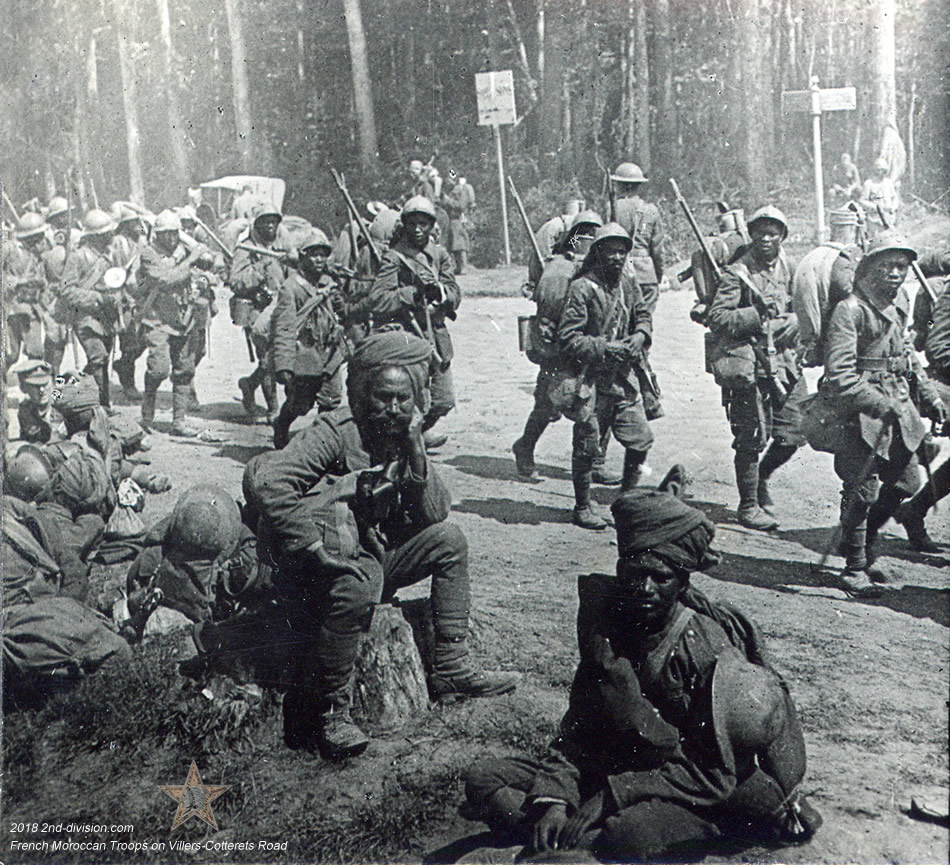We are standing beside the broad National Highway that leads up northeastward from Paris to Soissons, through Villers-Cotterets, and it is one of those momentous days of mid-July, 1918, when Marshal Foch was setting the stage for the mighty counter-offensive which crushed in the front of the German armies between Soissons and Chateau-Thierry and sent them reeling back from the Marne salient.
In the roadway, with his back to us, stands one of our American military police, controlling the traffic at the cross roads. His stalwart figure rises head and shoulders above those of of the little brown men marching in straggling column behind him. But though small in stature these soldiers of the 1st Moroccan Division have made for themselves through years of warfare a record as terrible fighters excelled by no troops in the world. Now they are are marching up to the front to take their places in the assault between the 1st and 2nd American Divisions.
In that epoch-marking attack these three divisions were to be the spearhead of the Allied thrust, and well they did their part. In the forward rush through the German trenches and wire against storms of machine gun and artillery fire and desperate resistence by the hostile infantry, it seemed that there was a generous rivalry between the two American units and the Moroccans as to which should go fastest and furthest. The race ended virtually in a tie, for though the 2nd Division reached its final objectives first, all three were there at the end of four days having penetrated the enemy positions to a depth of 7 miles, captured scores of guns and thousands of prisoners and dealt the Germans a blow which was fatal to their further hold on the Marne salient. |

